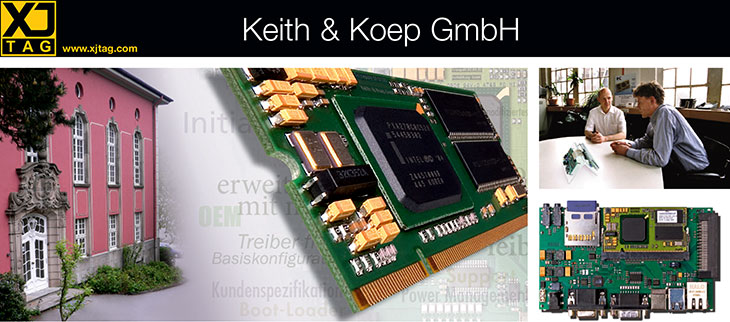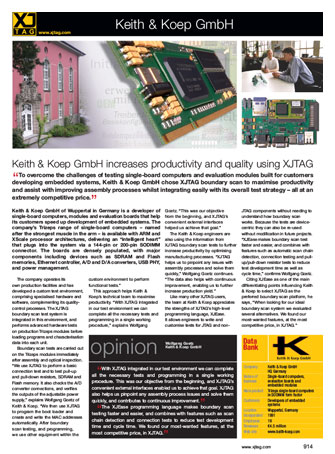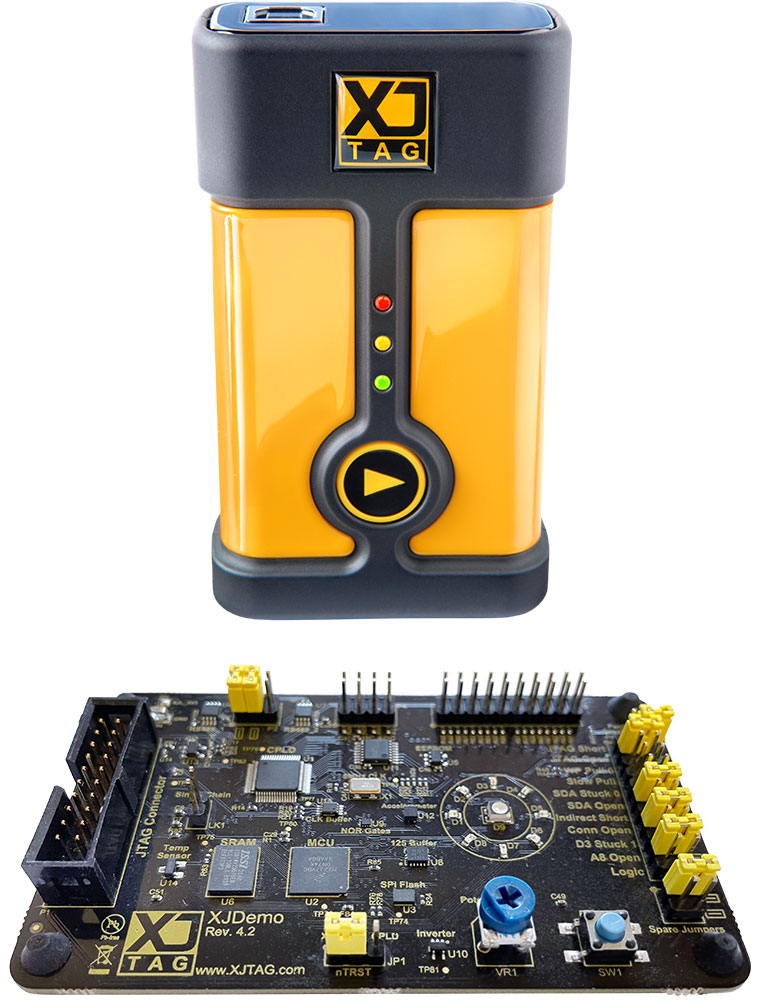
Keith & Koep GmbH increases productivity and quality using XJTAG
To overcome the challenges of testing single-board computers and evaluation modules built for customers developing embedded systems, Keith & Koep GmbH chose XJTAG boundary scan to maximise productivity and assist with improving assembly processes whilst integrating easily with its overall test strategy – all at an extremely competitive price.
Keith & Koep GmbH of Wuppertal in Germany is a developer of single-board computers, modules and evaluation boards that help its customers speed up development of embedded systems. The company’s Trizeps range of single-board computers – named after the strongest muscle in the arm – is available with ARM and XScale processor architectures, delivering an “intelligent heart” that plugs into the system via a 144-pin or 200-pin SODIMM connector. The boards are densely populated, with major components including devices such as SDRAM and Flash memories, Ethernet controller, A/D an d D/A converters, USB PHY, and power management.
The company operates its own production facilities and has developed a custom test environment, comprising specialised hardware and software, complementing its quality-control processes. The XJTAG boundary scan test system is integrated in this environment, and performs advanced hardware tests on production Trizeps modules before loading programs and characterisation data into each unit.
Boundary scan tests are carried out on the Trizeps modules immediately after assembly and optical inspection. “We use XJTAG to perform a basic connection test and to test pull-up and pull-down resistors, SDRAM and Flash memory. It also checks the A/D converter connections, and verifies the outputs of the adjustable power supply”, explains Wolfgang Goetz of Keith & Koep. “We then use XJTAG to program the boot loader and create and write the MAC addresses automatically. After boundary scan testing, and programming, we use other equipment within the custom environment to perform functional tests.”
This approach helps Keith & Koep’s technical team to maximise productivity. “With XJTAG integrated in our test environment we can complete all the necessary tests and programming in a single working procedure,” explains Wolfgang Goetz. “This was our objective from the beginning, and XJTAG’s convenient external interfaces helped us achieve that goal.”
The Keith & Koep engineers are also using the information from XJTAG boundary scan tests to further increase productivity by optimising manufacturing processes. “XJTAG helps us to pinpoint any issues with assembly processes and solve them quickly,” Wolfgang Goetz continues. “The data also helps with continuous improvement, enabling us to further increase production yield.”
Like many other XJTAG users, the team at Keith & Koep appreciates the strengths of XJTAG’s high-level programming language, XJEase. It allows engineers to write and customise tests for JTAG and non-JTAG components without needing to understand how boundary scan works. Because the tests are device-centric they can also be re-used without modification in future projects. “XJEase makes boundary scan test faster and easier, and combines with features such as automatic scan chain detection, connection testing and pull-up/pull-down resistor tests to reduce test development time as well as cycle time,” confirms Wolfgang Goetz.
Citing XJEase as one of the main differentiating points influencing Keith & Koep to select XJTAG as the preferred boundary scan platform, he says, “When looking for our ideal boundary scan system we evaluated several alternatives. We found our most-wanted features, at the most competitive price, in XJTAG.”

With XJTAG integrated in our test environment we can complete all the necessary tests and programming in a single working procedure. This was our objective from the beginning, and XJTAG’s convenient external interfaces enabled us to achieve that goal. XJTAG also helps us pinpoint any assembly process issues and solve them quickly, and contributes to continuous improvement.
The XJEase programming language makes boundary scan testing faster and easier, and combines with features such as scan chain detection and connection tests to reduce test development time and cycle time. We found our most-wanted features, at the most competitive price, in XJTAG.

Company: Keith & Koep GmbH
HQ Germany
Nature of business: Single-board computers, evaluation boards and embedded modules
Main product: Trizeps single-board computers in SODIMM form factor
Customers: Developers of embedded systems
Location: Wuppertal, Germany
Incorporated: 1991
Employees: 19
Revenues: €4.5 million
Web site: www.keith-koep.com

Configure your products














